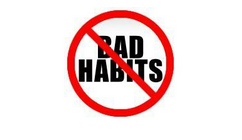I saw a great tweet recently from a satirical Twitter account which said: “Welcome to the age where it’s encouraged to pay for music before it’s recorded and take it for free once it’s made.” This tweet inspired a “Eureka!” moment. The reason why charging for music before it is recorded on crowd-funding services, such as Kickstarter and PledgeMusic, works is because it helps to create exclusivity in an industry plagued by abundance.
Recorded music has become a commodity, and the challenge to the artist is to create uniqueness within the commoditized system in order to build a sustainable career. It’s a matter of creating value within the commodity itself, within the distribution systems, and within the positioning of your music. Selling it before it’s recorded creates value because you’re selling a promise of greatness rather than a song itself. You’re selling the feeling and emotion related to a great song. It’s the artist’s duty to fulfill that promise.
The music industry has failed to emulate other commoditized industries by successfully differentiating commodity product from luxury product. While this is not a perfect analogy, people can buy a $0.99 burger at McDonald’s, but many choose to pay $15.00 for a Kobe burger at high-end restaurants — for perceived quality. “Free” water is available, yet we are willing to pay a significant premium for bottled water. Anyone could buy a $3.00 undershirt from Hanes, but instead, many people choose to pay $29 for the equivalent garment from American Apparel — for perceived quality.
Perhaps a more appropriate analogy is television. Television creates different value propositions for programs. You pay a price for basic cable, yet subscribers pay extra for HBO and Showtime, and expect higher quality programming in exchange. While online piracy affects television as well, this system has translated to show distribution on the Internet. Most network programs are available for free online via legitimate sites, but not as many cable, and even fewer premium channel programs are accessible. I believe that the music industry needs to find a way to differentiate between commodity products (perhaps developing acts with an unproven track record), and premium products (those acts whose catalog, performances, and lifestyle products indicate a higher quality of work.)
As it stands, music fans will pay either exactly or almost the same amount to buy a song from Lady Gaga or Churchill, or an album by the Beatles or Golden Earrings. It’s only when artists promote other products — merchandise, concert tickets, artwork — that the brand begins to differentiate and prices become accordingly dynamic. These are unique commodities. We have come to an age where a core product — recorded music — is no longer differentiated by price. It is only what used to be “auxiliary” income that differentiates the artist product and removes the “commoditization” of the industry.
In a recent article, business consultant and trade writer Cortney Harding asserted that streaming shows might be a lucrative business in the future for artists. Such shows certainly provide a unique experience, but aside from a few outlier successes, the facts suggest otherwise. The biggest, most recognizably-branded shows streamed online — Live 8, Coachella, Coldplay’s show from Spain — were provided without charge.
To date, the only large-scale, successful pay-per-view live stream was Jon Stewart and Bill O’Reilly’s “Rumble In The Air-Conditioned Auditorium.” The show format, featured performers, and timing of the event created the perfect environment to charge for the stream and expect it to be successful. Now, I realize that an announcement recently came out of the annual MIDEM conference celebrating the achievements of a couple of notable artists —Pompalmoose, Lisa Loeb, Jason Mraz, Indigo Girls, etc. — who made a substantial amount of money from the StageIt event platform. Kudos to them, but is it scalable? Or, should we look into what those artists did differently (and the investment it took to get them there) in order to generate success on those platforms?
The lesson to be drawn for artists: If your show is pretty similar from show-to-show, and you have yet to develop a superstar brand, switch it up. This will create a unique commodity for you in two arenas — the people who actually come to your show, and those who might want a good reason to pay to see your live stream at home. Each of these performances has the opportunity to be unique just once. There is value in seeing something live, first, and with other people. Monetizing that desire is where some unexploited opportunity lies. Even if the stream ends up online somewhere for free, fans will have missed the excitement and opportunity to see the live performance.
The industry needs to do a better job selling our artists as unique commodities. We need to figure out how to message fans in regards to what is unique about our artists and re-inject the status and pleasure of listening to a specific band — for longer than a hot minute. We need to invite fans to discover and invest more in our artists. We need to work towards sustaining a larger class of “working-class” artists — those who can sustain a career in music full time even though they might not be millionaires — rather than betting the farm on superstar acts. We need to develop their art more than their images, and we must find a way to re-inject value into the process of making music. It’s doable, even in the digital age, and if we do it, we’ll have a healthier industry.
Via Hypebot
by Alicia Yaffe(@thespllbndgroup) for sidewinder.fm, a music and tech think tank.






